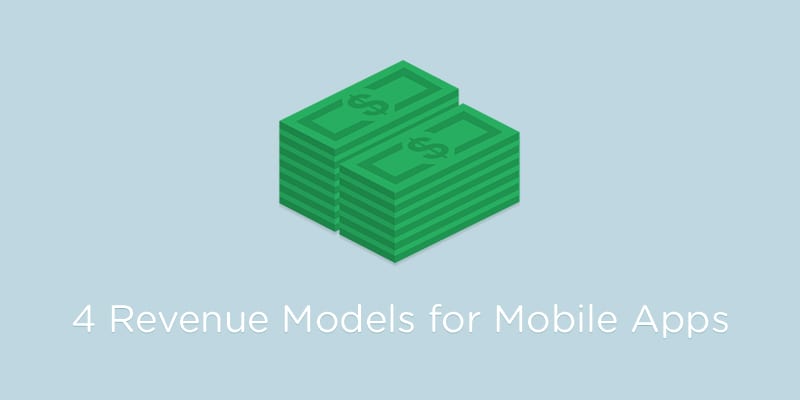4 Revenue Models for Mobile Apps


Looking to make a quick buck through your Mobile App? You’re in luck. The market for mobile apps is growing rapidly. Analytics firm AppAnnie projects that the app economy will grow to $6.3 trillion in 2021, and the user base to 6.3 billion. Below are 4 revenue models for mobile apps that will rake in cash. The type of business you run will determine which model will work best but there is no harm in using more than one. It all depends.
In-App Advertising
You might see this with a lot of indie apps that haven’t come up with a mature way to generate revenue. That isn’t to say that this method doesn’t make money, it most certainly does. Popular apps who run in-app ads can generate hundreds of thousands of dollars a month.
In-App Purchasing
In-app purchasing is a model mostly used by games and serves the secondary purpose of keeping users hooked on their app. Purchases made within in an app can be directly game related, or even user-interface related (removing ads). Overall in-app purchases can generate millions of dollars in revenue should your app be popular enough. But always make sure that users can access the best parts of your app for free, you want them to get hooked.
Freemium
Freemium is a tricky one as it can either work for you or somewhat against you. If your app is one where users interact on a daily basis, your first instinct might be to avoid this model since it usually involves one-time purchases to get the full experience of your app. This literally puts a revenue cap on yourself where you don’t need one. Studies have also shown that users don’t bite the bait on freemium purchases.
However, let’s say your app doesn’t quite have space for in-app advertising and isn’t gamified enough to take advantage of in-app purchases? It’s time to hack into the freemium model.
It’s true that the “classical” freemium model is falling out of style, and rightfully so. It leaves too much money on the table. Thankfully there are adaptations in the freemium model that open up a world full of revenue-generating possibility. The most successful companies tend to incorporate a hybrid approach. Please note that this is NOT an exhaustive list, more so a curated selection of some of the more effective variations.
1. Land & Expand
Best used if your application has potential value for organizations. Essentially you lock-in enough users to gain a foothold in an organization. The app experience for the users shouldn’t be diminished. Where the value comes in is in the scalability and integration of your app to fulfill a particular need of an organization.
2. Freeware
In this version of freemium, you give users a fully-functional app with the expectation that they will use it that way forever. But let’s say you come up with a new feature or capability, then you can have them purchase that feature as an add-on. Companies like Skype, Evernote, iCloud, Google Drive do this.
3. Data Monetization
This one is quite rare, but let’s just say your app acquires data on your userbase that might be valuable elsewhere. That would essentially mean that your users are the product should you sell that data to a third-party. Fairly simple, and can definitely be used together with another approach. Back when Pokemon Go was the rage, they had collected so much data on their users that I wouldn’t be surprised if they cashed in on some really valuable insights.
Subscription
Fairly self-explanatory and surely an evolution of the classical freemium model; services like Apple Music and Spotify might come into mind. Subscription based apps usually provide something users want (unlimited skips, no ads in between songs, etc). Definitely a good option for apps that serve to accompany users throughout their daily life.
Again, this isn’t an exhaustive list of revenue models but only a selection of some of the most effective. It will be interesting to see what new models come up in the future.
- Glide Unveils Groundbreaking AI-Powered Features to Revolutionize No-Code Software Development - August 7, 2023
- How Low-Code Applications Can Help Your Business - August 6, 2023
- Why No-Code Platforms Are Still Relevant in 2023 - August 6, 2023
























